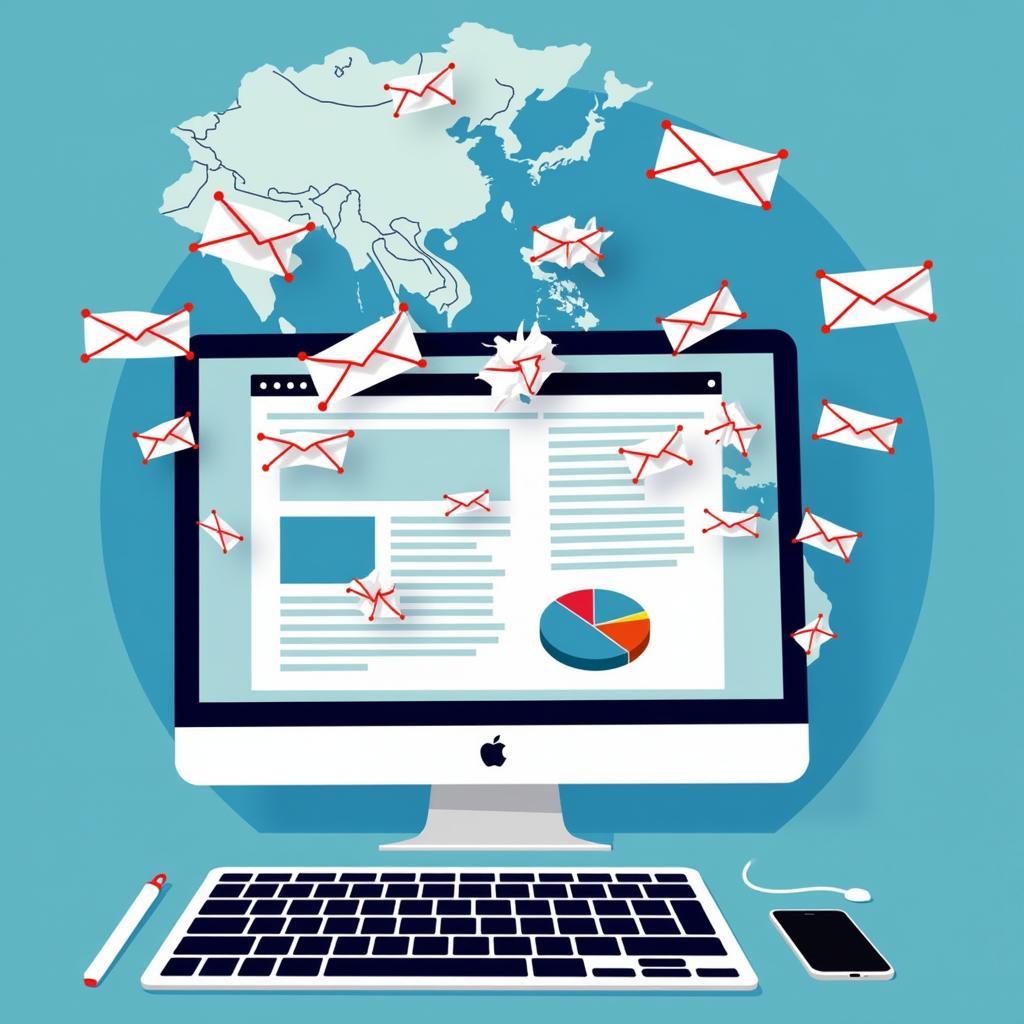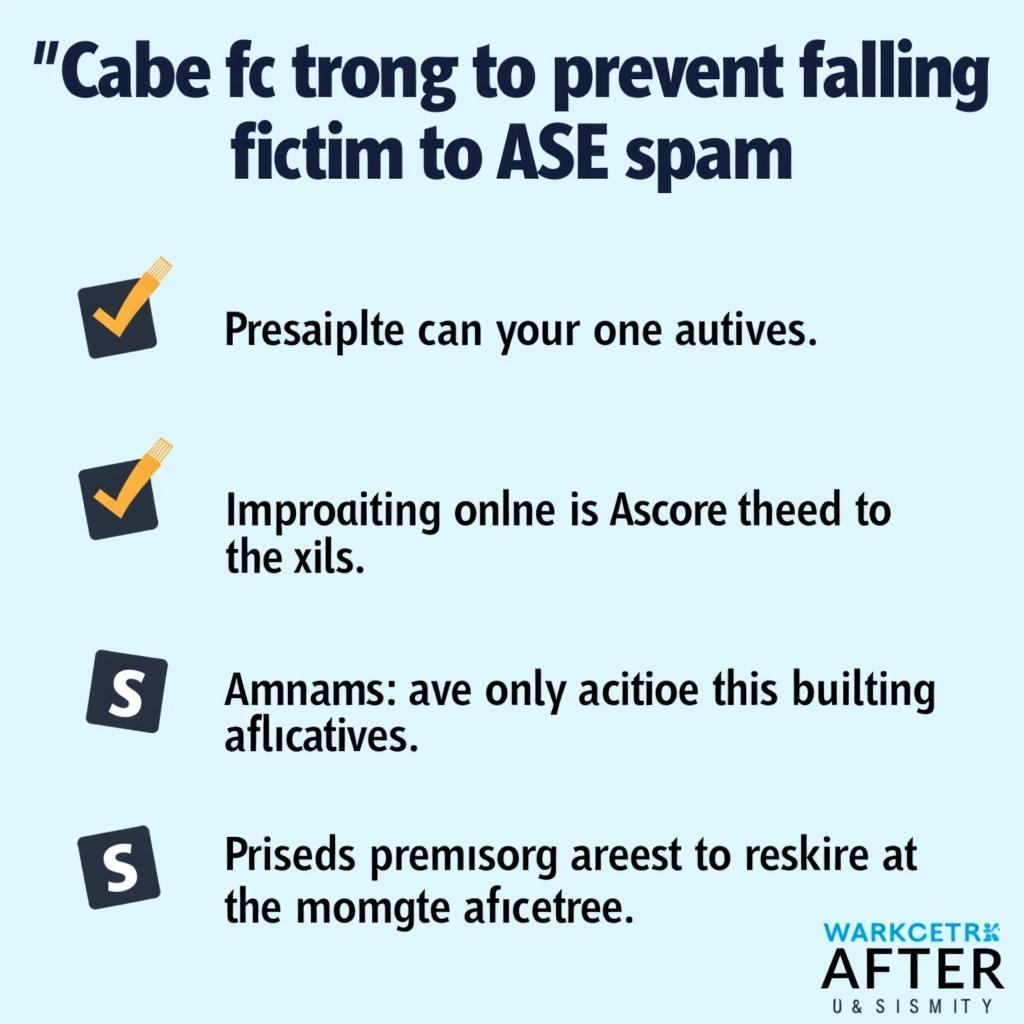Ase Spam has become a growing concern in Southeast Asia, impacting businesses and individuals alike. This article delves into the intricacies of ASE spam, exploring its definition, methods, and the reasons behind its prevalence in the region. We’ll also equip you with practical strategies and resources to effectively combat ASE spam and safeguard your digital presence.
 ASE Spam in Southeast Asia
ASE Spam in Southeast Asia
What is ASE Spam and Why is it Prevalent in Southeast Asia?
ASE Spam, short for “Adult Site Email Spam,” refers to unsolicited emails that promote adult content, dating services, or related products. While spam is a global issue, several factors contribute to its prevalence in Southeast Asia:
- Rapid Digital Adoption: The region boasts a burgeoning internet user base, with millions coming online for the first time. This rapid expansion creates a vast pool of potential targets for spammers.
- Affordable Internet Access: Relatively inexpensive internet access in many Southeast Asian countries makes it economically viable for spammers to operate large-scale campaigns.
- Limited Awareness and Resources: Cybersecurity awareness and resources can be limited in some parts of Southeast Asia, making it challenging for individuals and businesses to effectively identify and mitigate spam threats.
 Common Methods of ASE Spam
Common Methods of ASE Spam
Common Tactics Used in ASE Spam Campaigns
Understanding the methods employed by spammers is crucial in combating ASE spam effectively. Some common tactics include:
- Email Spoofing: Spammers often disguise their identities by forging email headers to make it appear as if the email originates from a legitimate source.
- Botnets: Networks of compromised computers, known as botnets, are often used to send massive volumes of spam emails, making it difficult to trace the source.
- Phishing Attacks: ASE spam emails may contain links to fraudulent websites designed to steal personal information, such as login credentials or credit card details.
- Malicious Attachments: These emails might contain attachments infected with malware, which can compromise your device or steal sensitive data.
Effective Strategies to Combat ASE Spam
Combating ASE Spam requires a multi-faceted approach, combining technical solutions with user awareness:
- Email Filtering and Spam Detection: Implement robust email filtering systems that can identify and block spam emails based on keywords, sender reputation, and other factors.
- Antivirus and Anti-Malware Software: Install and regularly update antivirus and anti-malware software on all devices to detect and remove malicious software that may be spread through spam emails.
- Caution with Suspicious Emails: Exercise caution when opening emails from unknown senders. Avoid clicking on links or downloading attachments unless you are certain of their legitimacy.
- Report Spam: Most email providers allow users to report spam emails. Reporting spam helps improve spam filters and protect other users.
The Role of ASEAN in Combating Spam
ASEAN recognizes the importance of cybersecurity and has taken steps to address spam and other online threats:
- ASEAN Cybersecurity Cooperation Strategy: This strategy outlines a framework for cooperation among ASEAN member states to enhance cybersecurity capabilities and address cyber threats, including spam.
- ASEAN-Japan Cybersecurity Capacity Building Centre: Established in collaboration with Japan, this center aims to strengthen cybersecurity capacity in the region through training, research, and incident response.
Protecting Yourself from ASE Spam: Best Practices
- Be wary of unsolicited emails, even if they appear to be from known contacts. Spammers can spoof email addresses, making it seem like an email is from someone you know.
- Never click on links or open attachments in emails from unknown senders. These links could lead to phishing websites or download malware onto your device.
- Keep your software up to date. Software updates often include security patches that can help protect your device from malware.
- Use strong passwords and enable two-factor authentication whenever possible. This makes it more difficult for hackers to access your accounts, even if they have your password.
 Tips for Protecting Yourself from ASE Spam
Tips for Protecting Yourself from ASE Spam
Conclusion
ASE spam poses a significant threat to individuals and businesses in Southeast Asia. However, by understanding the tactics used by spammers and implementing effective countermeasures, we can minimize the risks and maintain a safer online environment. By working together, individuals, businesses, and ASEAN member states can contribute to a more secure and resilient digital ecosystem in the region.
FAQs about ASE Spam
What should I do if I clicked on a link in an ASE spam email?
If you clicked on a link in an ASE spam email, immediately run a full scan of your device with your antivirus software. Change the passwords for any accounts that may have been compromised.
Can ASE spam infect my phone?
Yes, ASE spam can infect your phone if it contains a link to a malicious website or an attachment with malware.
How do I know if an email is actually from a legitimate company?
Check the sender’s email address carefully. Hover over any links before clicking on them to see the actual URL. Contact the company directly using contact information from their official website.
What are the legal consequences of sending ASE spam?
Sending unsolicited commercial email is illegal in many countries, including those in Southeast Asia. Penalties for sending spam can include fines and imprisonment.
What are some resources for reporting ASE spam?
You can report ASE spam to your email provider, as well as to the authorities in your country. You can also report spam to international organizations, such as the Internet Crime Complaint Center (IC3).
Need Further Assistance with ASE Spam?
For comprehensive support and guidance on tackling ASE spam, contact our team at:
- Phone Number: 0369020373
- Email: aseanmediadirectory@gmail.com
- Address: Thon Ngoc Lien, Hiep Hoa, Bac Giang, Vietnam
Our dedicated customer support team is available 24/7 to assist you.
